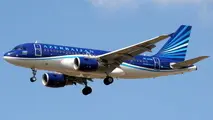Int'l Airlines Gradually Resuming Iran Flights
After four months of closure due to Covid-19 curbs, both Iranian and foreign airlines are resuming flights to and from destinations in Iran.

After four months of closure due to Covid-19 curbs, both Iranian and foreign airlines are resuming flights to and from destinations in Iran.
Emirates landed its Boeing-777 at Tehran's Imam Khomeini International Airport on July 17.
A Covid-19 PCR test is needed for boarding the flight, said an official with IKIA, adding that passengers are required to provide a certificate confirming that they have tested negative for Covid-19 from no later than 96 hours before their flight.
What's more, Qatar Airways has increased the number of its weekly flights to Tehran from 17 to 21 as of Friday.
Qatar Airways also resumed passenger flights to Mashhad on Saturday morning. According to local officials, the airline is set to operate four weekly flights to Mashhad in northeast Iran. The airline also reopened passenger flights to Isfahan and Shiraz earlier on Friday.
As of June 17, Qatar Airways operates 25 weekly flights to four major cities in Iran.
Qatar Airways Cargo operated several flights to bring medical supplies to almost every parts of Iran in the past four months to support Iranians in their fight against coronavirus.
Officials at the Iranians Association of Airlines recently told ISNA that Turkish Air is also set to gradually resume Iran flights. The airline, however, announced that it has no plan to resume Tehran flights at least until July 31. The airline accounts for a considerable portion of international flights to/from Iran.
In February, it suspended flights to Iran due to restrictive measures against the spread of Covid-19.
Mashhad International Airport hosted Afghanistan's Kam Air jets last week. The airline is scheduled to operate directly from Kabul, Herat and Kandahar to Mashhad. The airport monitors passengers' health, mainly through temperature checks and physical distancing measures.
And Air Arabia resumed Sharjah–Shiraz-Sharjah flights earlier this month. The airline currently operates two weekly flights.
Hefty Losses Over Covid-19
The Covid-19 pandemic has had a severe impact on Iran’s aviation sector due to the resulting travel restrictions, especially a slump in demand among travelers during the peak travel season in Iran, i.e. Norouz, the Persian New Year holidays (March 20-April 3).
Official figures say airlines are facing a cash flow crisis after the industry was grounded and travel demand dropped by 90% during Norouz, so much so that some of them claimed they couldn’t pay their staff.
The number of air passengers reduced by 76% and flights by 90% during Norouz, according to data released by Iran Airports Company.
The impact of the coronavirus has resulted in Iran's 16 airlines losing up to 30,000 billion rials ($118 million) from Feb. 20 to April 8, as the Association of Iranian Airlines estimated.
Application for 24,000 billion rials ($95 million) in coronavirus bailout loans for airlines and other aviation sectors opened at the Ministry of Cooperatives, Labor and Social Welfare’s Kara.mcls.gov.ir in June.
The 750-trillion-rial ($2.97 billion) rescue package that the government approved following the outbreak of coronavirus in March included 80,000 billion rials ($352 million) in loans for the transportation sector.
According to the Central Bank of Iran Governor Abdolnasser Hemmati, the lending rate for the government aid package will be 12% to be repaid within two years.
Commenting on the interest rate, Hemmati said it is reasonable, given the high inflation rate in the country.
“Even if banks set 18% interest on loans, the real interest rate would still be negative when compared to the annual inflation. Any rate below 12% would apparently impose further financial strain on banks,” he said.
Hemmati has said only businesses that did not lay off workers during the coronavirus crisis would be eligible for the loans. He instructed banks to process the loans soon and cut red tape.
Most airlines in the world are facing bankruptcy, according to CAPA—a trusted source of market intelligence for the aviation and travel industry.
British Airways CEO Alex Cruz says today’s coronavirus crisis is more serious than any previous aviation crisis.
As the impact of the coronavirus and multiple government travel reactions sweep through the world, many airlines have probably already been driven into technical bankruptcy, or are at least substantially in breach of debt covenants.
Cash reserves are running down quickly, as fleets are grounded and what flights there are operate much less than half full.
Forward bookings are far outweighed by cancellations and each time there is a new government recommendation it is to discourage flying. Demand is drying up in ways that are completely unprecedented. Normality is not yet on the horizon, Aviation24 reported.
IAC's Q1 Airport Traffic Report
Iran Airports Company registered a total of 44,918 takeoffs and landings during the first quarter of the current Iranian year (March 20-June 20) to register a 51% decline compared with the similar period of last year.
More than 4.04 million passengers were transported during the three months under review, indicating a 64% year-on-year decline.
Over 36,793 tons of cargos were handled in spring, which shows a 68% fall compared with the corresponding period of last year, IAC's latest report published on its website shows.
A total of 43,479 takeoffs and landings were registered by domestic flights during the three-month period, down 43% YOY. Close to 3.97 million passengers and more than 29,224 tons of cargo were transported domestically, indicating a 56% and 57% decline respectively YOY.
On the international front, 1,439 takeoffs and landings were registered, down by 91% YOY. A total of 75,546 passengers and more than 7,569 tons of cargo were transported to and from overseas destinations, down 97% and 84% respectively compared with the corresponding period of last year.
Similar to previous IAC reports, Tehran’s Mehrabad International Airport was the busiest Iranian airport during the period under review with 18,082 takeoffs and landings, registering a 41% decline.
The airport handled about 1.71 million passengers in spring, showing a 53% decline and around 12,063 tons of cargo, indicating a 55% decrease YOY.
Mashhad International Airport was the second busiest airport with 4,688 takeoffs and landings, indicating a 66% YOY decrease. It transported 521,446 passengers and 3,961 tons of cargos, down 75% and 80% respectively year-on-year.
Shiraz International Airport registered 3,550 takeoffs and landings (a 54% YOY decrease), while transporting a total of 295,143 passengers (a 54% decline) and over 2,558 tons of cargos showing a 69% decrease YOY. The airport ranked third on the list of Iran’s busiest airports during the two-month period.
Month-on-Month Growth
The IAC report also illustrates that the total takeoffs and landings during the third month under review (May 21–June 20) observed a 55% jump in the number of takeoffs and landings in comparison with the preceding month.
Accordingly, the number of passengers and the volume of cargos handled during the month also witnessed a 58-66% increase respectively month-on-month.
In case of domestic flights, the takeoffs and landings, as well as the handling of passengers and cargos increased by 56%, 59% and 73% respectively compared to the month before.
The international front, however, is still awaiting more green lights to regain its footprint.
The number of international takeoffs and landings, as well as the handling of passengers and cargo, during the third month under review observed a 24%, 51% and 33% increase respectively compared with the preceding month.



